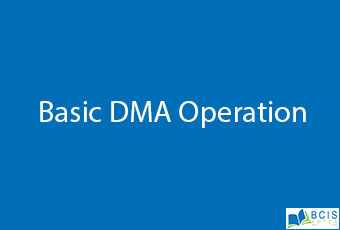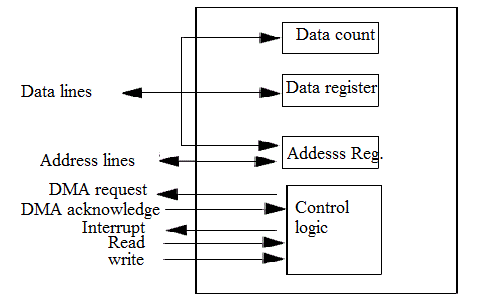
Basic DMA Operation
Basic DMA Operation refers, Direct Memory Access (DMA) is a method that allows an input/output (I/O) device to send or receive data directly to or from the main memory, bypassing the CPU to speed up memory operations. The process is managed by a chip known as a DMA controller (DMAC). DMA is a way to improve processor activity and I/O transfer rate by taking over the job of transferring data from the processor and letting the processor do other tasks. This technique overcomes the drawbacks of the other two I/O techniques which are the time-consuming process when issuing commands for data transfer and tie-up the processor in data transfer while the data processing is neglected. It is more efficient to use the DMA method when a large volume of data has to be transferred. For DMA to be implemented, the processor has to share its’ system bus with the DMA module. Therefore, the DMA module must use the bus only when the processor does not need it, or it must force the processor to suspend operation temporarily. The latter technique is more common to be used and it is referred to as cycle stealing.
Basic Operation of DMA
When the processor wishes to read or send a block of data, it issues a command to the DMA module by sending some information to the DMA module. The information includes:
- Read or write command, sending through reading and write control lines.
- The number of words to be read or written, communicated on the data lines, and stored in the data count register.
- Starting location in memory to read from or write to, communicated on data lines, and stored in the address register.
- Address of the I/O device involved, communicated on the data lines.

You may also like Parallel Interfacing

Leave a Reply